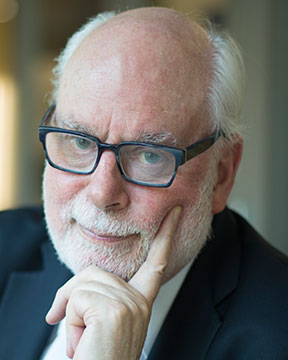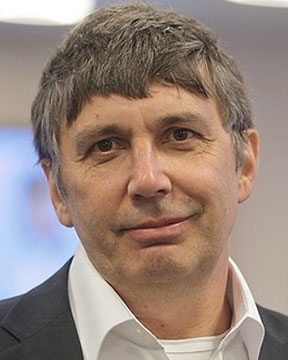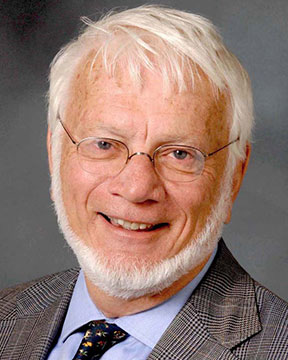ORALS
SESSION: SISAMTueAM-R5
SPD Nanomaterials | Zehetbauer International Symposium on Science of Intelligent and Sustainable Advanced Materials (4th Intl. Symp. on Science of Intelligent and Sustainable Advanced Materials (SISAM)) |
| Tue Nov, 6 2018 / Room: Copacabana A (150/1st) | |
| Session Chairs: Malgorzata Lewandowska; Boris Straumal; Session Monitor: TBA |
12:10: [SISAMTueAM03] Invited
Properties of a Lean Silver Alloy After Equal Channel Angular Pressing and Conventional Post-deformation Maciej
Krystian1 ; Bernhard
Mingler
1 ; Jelena
Horky
2 ; Damien
Colas
3 ; Frédéric
Diologent
3 ;
1AIT Austrian Institute of Technology GmbH, Wiener Neustadt, Austria;
2AIT Austrian Institute of Technology GmbH, Seibersdorf, Austria;
3Varinor SA, Delémont, Switzerland;
Paper Id: 353
[Abstract] Silver is a soft, precious metal widely used in electronics, medicine, and in the jewellery sector, due to its exceptional properties such as low electrical resistance, antibacterial behaviour, shiny appearance, and resistance to tarnishing. However, final products are usually made of silver alloys to achieve reasonable hardness and strength needed for these kinds of applications. However, alloying is not always the desirable practice, especially in jewellery, as it can reduce tarnishing and corrosion resistance. Therefore, Severe Plastic Deformation is a promising way to improve the mechanical properties [1].
The copper-free silver alloy of the composition Ag 97.2 wt%, In 1.5 wt%, Ge 1.0 wt%, others 0.3 wt% was developed, cast, and cold-drawn. In order to further improve mechanical properties, room-temperature Equal Channel Angular Pressing (ECAP) along with two-step forging (open-die and impression-die forging) and rolling — as two diverse methods of conventional post-deformation — were performed. In this manner, the original grain size of 130 μm was refined to an ultrafine-grained microstructure with mean grain size of 420 nm. Consequently, the combination of ECAP, two-step forging and rolling resulted in outstanding mechanical properties: tensile yield strength of 491 MPa (+355% compared to the as cold-drawn strength), ultimate tensile strength of 550 MPa (+196%), and Vickers hardness of 167 HV1 (+234%). Furthermore, a much more homogeneous hardness distribution over the whole cross-section of the bars was achieved by ECAP.
Contrary to some reports on pure silver [2, 3] both, the microstructure and strength remained thermally stable for at least one year at room temperature as well as for at least 100h and 2h at 100°C and 150°C, respectively.
Thus, ECAP is able to effectively increase the mechanical properties of this lean silver alloy which exhibits desirable tarnishing and corrosion resistance.
References:
[1] M. Zehetbauer and R. Valiev (Eds.), Nanomaterials by Severe Plastic Deformation, Wiley-VCH, 2006, ISBN: 978-3-527-60494-4
[2] H. Matsunaga and Z. Horita, Softening and Microstructural Coarsening without Twin Formation in FCC Metals with Low Stacking Fault Energy after Processing by High-Pressure Torsion, Materials Transactions 50 (2009) 1633-1637. doi:10.2320/matertrans.MF200921
[3] Z. Hegedűs, J. Gubicza, M. Kawasaki, N.Q. Chinh, Z. Fogarassy and Terence G. Langdon, The effect of impurity level on ultrafine-grained microstructures and their stability in low stacking fault energy silver, Materials Science and Engineering A 528 (2011) 8694-8699. doi:10.1016/j.msea.2011.08.034
SESSION: SISAMWedPM3-R5
Functional Materials | Zehetbauer International Symposium on Science of Intelligent and Sustainable Advanced Materials (4th Intl. Symp. on Science of Intelligent and Sustainable Advanced Materials (SISAM)) |
| Wed Nov, 7 2018 / Room: Copacabana A (150/1st) | |
| Session Chairs: Spomenka Kobe; João Paulo Sinnecker; Session Monitor: TBA |
17:40: [SISAMWedPM313]
Optimization of Mechanical and Corrosion Properties of Biodegradable Mg-Zn-Ca Alloys by SPD-Processing and Additional Heat Treatment Michael J.
Zehetbauer1 ; Andrea
Ojdanic
1 ;
Erhard
Schafler1 ; Jelena
Horky
2 ; Bernhard
Mingler
3 ; Dmytro
Orlov
4 ;
1University of Vienna, Wien, Austria;
2AIT Austrian Institute of Technology GmbH, Seibersdorf, Austria;
3AIT Austrian Institute of Technology GmbH, Wiener Neustadt, Austria;
4Lund University, Lund, Sweden;
Paper Id: 424
[Abstract] This lecture reports the changes in hardening and corrosion of biodegradable Mg-Zn-Ca alloys caused by HPT-processing and long-term heat treatments, which have been applied in order to strengthen the alloy and to adapt the Younga's modulus of the alloy to that of the human bone, for suitable application as an biodegradable implant material. The structural changes are represented by the evolution of precipitates as well as of deformation induced defects like dislocations and vacancy clusters. The studies aimed to quantify the individual effects of the structural modifications to strength and to corrosion rate, with the final goal to optimize the alloy for the use as biodegradable implants with respect to mechanical properties as well as corrosion rate [1].
The thermomechanical procedure used in this work follows that of Orlov et al. [2] applied to Mg-Zn-Zr alloy ZK60. Both the precipitates as well as the vacancy clusters achieve strength increases; in case of the latter, the Zn atoms act as trapping sites not only for HPT-induced dislocations but also for vacancies. So far, overall increases of strength of up to 250% were reached. Quantitative estimations show that the vacancy clusters contribute far more to the total strength increase than the precipitates. Furthermore, vacancy concentrations of at most 10-5 cause the hardness increase measured [3]; the experimental results, however, exhibited vacancy concentrations till to even 10-3 which means that a significant part of the HPT-induced vacancies stays single and thus does not contribute to hardening.
The corrosion rate as well as the Younga's modulus remained unchanged during the processing history consisting of both HPT deformation as well as heat treatments, thus making these alloys a very attractive biodegradable material.
This work has been supported by projects J2-7157 of the Slovenian Research Agency ARRS, and I2815-N36 of the Austrian Science Fund FWF.
References:
[1] Hofstetter J., Becker M., Martinelli E., Weinberg A.M., Mingler B., Kilian H., Pogatscher S., Uggowitzer P.J., Loeffler J.F. (2014) JOM, 66, 566-572
[2] Orlov D., Pelliccia X., Fang L., Bourgeois L., Kirby N., Nikulin A.Y., Ameyama K., Estrin Y. (2014) Acta Mater. 72, 110-124
[3] Kirchner H.O.K. (1976) Z.Metallk. 67, 525-532



















